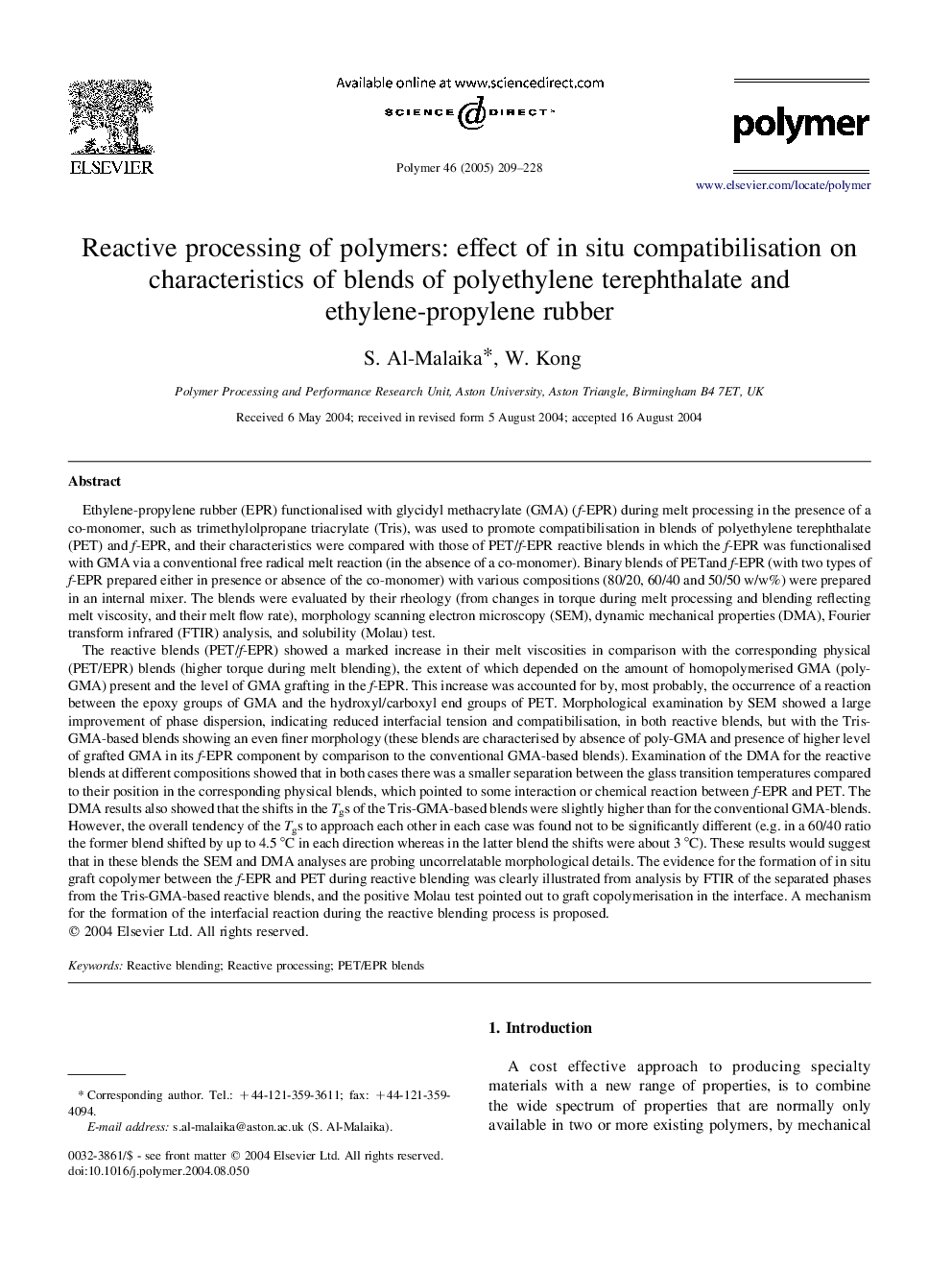| Article ID | Journal | Published Year | Pages | File Type |
|---|---|---|---|---|
| 9559772 | Polymer | 2005 | 20 Pages |
Abstract
The reactive blends (PET/f-EPR) showed a marked increase in their melt viscosities in comparison with the corresponding physical (PET/EPR) blends (higher torque during melt blending), the extent of which depended on the amount of homopolymerised GMA (poly-GMA) present and the level of GMA grafting in the f-EPR. This increase was accounted for by, most probably, the occurrence of a reaction between the epoxy groups of GMA and the hydroxyl/carboxyl end groups of PET. Morphological examination by SEM showed a large improvement of phase dispersion, indicating reduced interfacial tension and compatibilisation, in both reactive blends, but with the Tris-GMA-based blends showing an even finer morphology (these blends are characterised by absence of poly-GMA and presence of higher level of grafted GMA in its f-EPR component by comparison to the conventional GMA-based blends). Examination of the DMA for the reactive blends at different compositions showed that in both cases there was a smaller separation between the glass transition temperatures compared to their position in the corresponding physical blends, which pointed to some interaction or chemical reaction between f-EPR and PET. The DMA results also showed that the shifts in the Tgs of the Tris-GMA-based blends were slightly higher than for the conventional GMA-blends. However, the overall tendency of the Tgs to approach each other in each case was found not to be significantly different (e.g. in a 60/40 ratio the former blend shifted by up to 4.5 °C in each direction whereas in the latter blend the shifts were about 3 °C). These results would suggest that in these blends the SEM and DMA analyses are probing uncorrelatable morphological details. The evidence for the formation of in situ graft copolymer between the f-EPR and PET during reactive blending was clearly illustrated from analysis by FTIR of the separated phases from the Tris-GMA-based reactive blends, and the positive Molau test pointed out to graft copolymerisation in the interface. A mechanism for the formation of the interfacial reaction during the reactive blending process is proposed.
Keywords
Related Topics
Physical Sciences and Engineering
Chemistry
Organic Chemistry
Authors
S. Al-Malaika, W. Kong,
